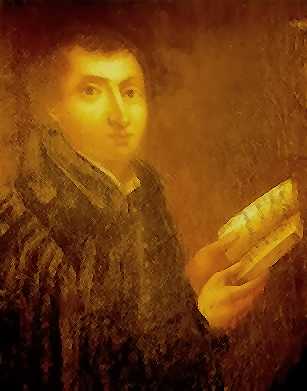|
The Eucharistic Letter is a living spiritual tradition.
It is now believed by the latest research (Nuns Without Cloister, Marguerite Vacher, SSJ, 1991) that the original Eucharistic Letter was sent in 1660 by Jean-Pierre Medaille, S.J. to Sr. Marguerite Burdier, one of the first six founding women, who was at that time, the superior of a community house in Tence, France.
It is a seven page handwritten Letter that speaks of a new form of community he lovingly called the 'Little Design'.
|
THE ORIGINS OF "THE LITTLE DESIGN" COMMUNITIES
JEAN-PIERRE MEDAILLE, S.J. (1610-1669)
“Even though the Eucharistic Letter was addressed only to one person, it contained a message for all members of the “very little Institute,” a message of union of the sisters with God, among themselves and with every neighbour, the congregation as a whole being called to make “profession of the most pure and perfect love.”
Written after the Avis et Reglements, this message could help to unify from the inside out the diversity of forms of life in the houses. That union was effected through making littleness, humility, and the absence of legal recognition the basis of the new association and a means of advancing “the glory of God and the salvation of souls.”
It seems however, that the message was not received, at least not in this particular form. Apparently, the Eucharistic Letter was not circulated, or very little, among the communities. It might have been perceived primarily as a personal message and therefore more or less rejected for use by the group. Perhaps it was thought to be too close to the Company of the Blessed Sacrament. Some houses might have felt cramped by the notion of not being legally recognized. All that is known is that Marguerite Burdier, in order to work toward “the double union,” was content to keep this letter as a treasure in her heart and in her records, without imposing it.” (Vacher, p. 109)
Just 10 years earlier, the Congregation of St. Joseph had been established. (1650) Bishop de Maupas of Le Puy had been working with Fr. Medaille and the first six founding women to establish them canonically and legally as a new form of consecrated life, living outside the cloister. “On October 15th, Bishop de Maupas imparted his blessing; placed them under the protection of St. Joseph; gave them rules for their guidance and prescribed a form of habit for them.” (Vacher, p. 56)
The Bishop assigned them to the direction of the Hopital des Orphelines of Le Puy. Historical research reminds us that in the early years this new Congregation of St. Joseph accepted members and there was rapid growth and expansion out around the neighbouring towns and villages in southern France. Small groupings of women opened new houses often at the invitation of parishes. “Within a decade, the small congregation established in the Velay had grown considerably, to twenty-two houses in four dioceses: sixteen in the diocese of Le Puy, three in Vienne, two in Lyon and one in Clermont.”(Vacher, p.96) It must have been affirming and exciting to be a part of this early movement of grace since apostolic congregations of women religious who were allowed to move beyond the cloister out into active ministry within their own neighborhoods was a brand new reality in 17th Century France.
But the birth and growth of these early communities brought its own challenges and crisis. It wasn’t long before “problems connected with the very nature of the vocation and the elasticity of its structures” began to manifest. Father Medaille was asked to write the Avis and Reglements (Advice and Regulations necessary to introduce uniformity and good order in the houses of the Daughters of St. Joseph.)
Manuscripts tell us that there were differences in expression of this new way of life amongst the country sisters and the town sisters. The tensions and confrontations originated from the differing points of view among the sisters themselves. The conventual religious life was more attractive to some while others resonated with the fresh new approach of pursuing their goal of holiness of life along with apostolic service as an expression of their consecration to Christ.
It is understandable that over the decades and centuries our sisters have grappled with “the impossibility of imaging that the vocation of St. Joseph could be lived without the usual forms of religious life.” (Vacher p. 167)
It was within this ‘climate’ of our early beginnings that Jean- Pierre received this divine revelation of The Eucharistic Letter and gave it to Marguerite Burdier. Considering her to be spiritually astute, we accept her decision and the self-emptying love it must have been for her to not share it with the sisters. Gratefully, she treasured it in her heart and preserved it for future generations.
As we see it now, this mystical-prophetic document is pure gift for our time - ‘since this vision is for its own time only.’ (Hab.2) When we read it and ponder its spiritual vision and lifestyle, our hearts resonate. Where and how does it belong in our evolving story in the 21st century? Could this be ‘the time for the Little Design vision to be fulfilled’ as Habakkuk proclaims?


